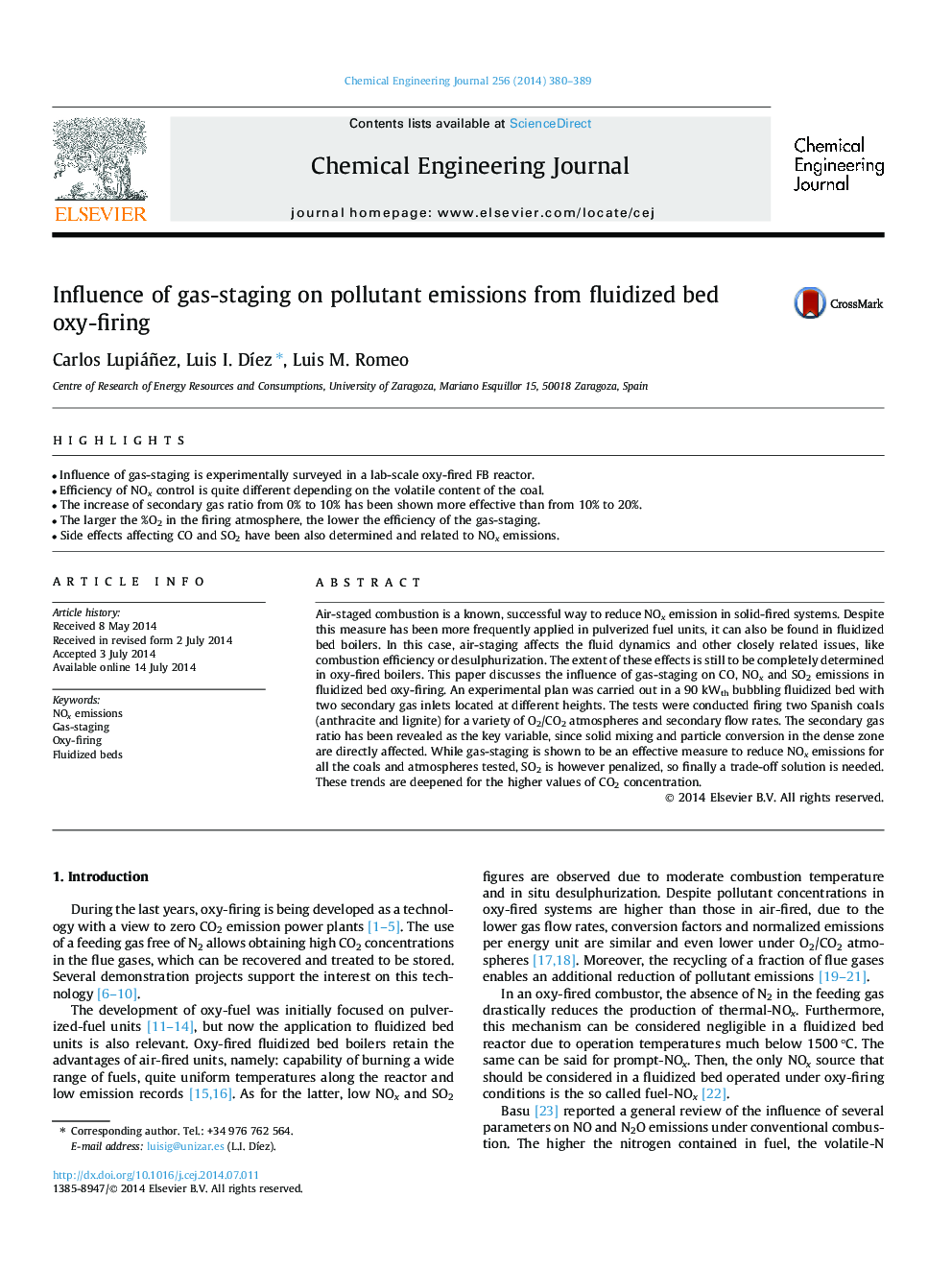| Article ID | Journal | Published Year | Pages | File Type |
|---|---|---|---|---|
| 147015 | Chemical Engineering Journal | 2014 | 10 Pages |
•Influence of gas‐staging is experimentally surveyed in a lab‐scale oxy‐fired FB reactor.•Efficiency of NOx control is quite different depending on the volatile content of the coal.•The increase of secondary gas ratio from 0% to 10% has been shown more effective than from 10% to 20%.•The larger the %O2 in the firing atmosphere, the lower the efficiency of the gas‐staging.•Side effects affecting CO and SO2 have been also determined and related to NOx emissions.
Air-staged combustion is a known, successful way to reduce NOx emission in solid-fired systems. Despite this measure has been more frequently applied in pulverized fuel units, it can also be found in fluidized bed boilers. In this case, air-staging affects the fluid dynamics and other closely related issues, like combustion efficiency or desulphurization. The extent of these effects is still to be completely determined in oxy-fired boilers. This paper discusses the influence of gas-staging on CO, NOx and SO2 emissions in fluidized bed oxy-firing. An experimental plan was carried out in a 90 kWth bubbling fluidized bed with two secondary gas inlets located at different heights. The tests were conducted firing two Spanish coals (anthracite and lignite) for a variety of O2/CO2 atmospheres and secondary flow rates. The secondary gas ratio has been revealed as the key variable, since solid mixing and particle conversion in the dense zone are directly affected. While gas-staging is shown to be an effective measure to reduce NOx emissions for all the coals and atmospheres tested, SO2 is however penalized, so finally a trade-off solution is needed. These trends are deepened for the higher values of CO2 concentration.
